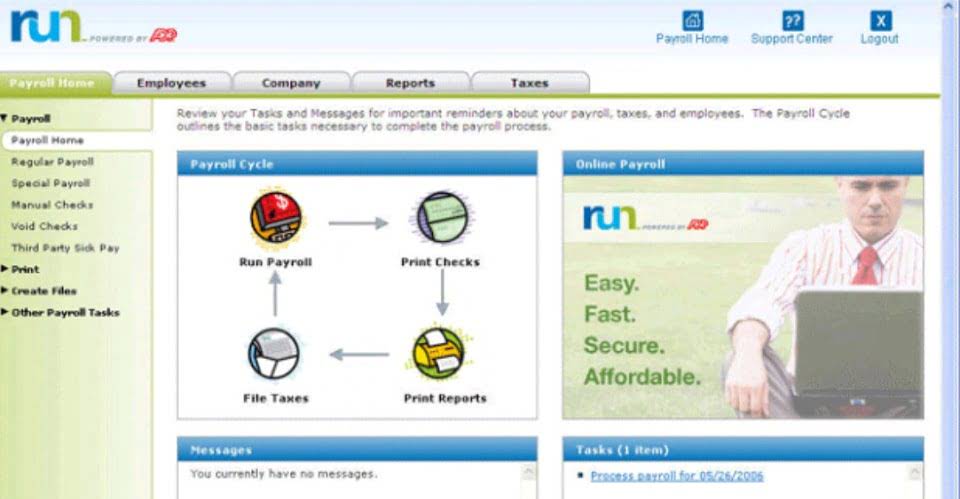
Both ratios revolve around the idea of assessing a company’s financial leverage. In finance, equity multiplier is defined as a measure of financial leverage. Akin to all debt management ratios, the equity multiplier is a method of evaluating a company’s ability to use its debt for financing its assets. The equity multiplier is also referred to as the leverage ratio or the financial leverage ratio. The equity multiplier’s significance varies across industries, reflecting the unique financial dynamics and risk profiles inherent to each sector. For instance, capital-intensive industries such as utilities and telecommunications often exhibit higher equity multipliers.

Everything You Need To Master Financial Modeling
- Net profit margin, asset turnover and the equity multiplier are combined to calculate ROE, which allows analysts to consider the relative of each impact separately.
- On the other hand, a high equity multiplier might suggest that the company relies heavily on debt, and hence, it might be more vulnerable to business cycles and interest rate volatility.
- The resulting number is a direct measurement of the total number of assets per dollar of the stockholders’ equity.
- Therefore, a higher equity multiplier might coincide with a higher debt ratio, but this is not a strict rule.
- In other words, a 2.19x equity multiple is much better if the holding period is 1 year versus 100 years.
- The income statement offers insights into net income, which can be affected by debt levels.
- Then, he needs to look at other aspects of the equation, i.e., the company’s operational efficiency and efficiency of the utilization of assets.
A high equity multiplier leads to a higher return on equity but at the cost of increased risk. To match the timing between the denominator and numerator among all three ratios, the average balance is used (i.e. between the beginning and end Interior Design Bookkeeping of period value for balance sheet metrics). The interest coverage ratio is a critical metric for understanding a company’s ability to meet its interest obligations, which is especially relevant when considering leverage. Return on Equity (ROE) is another crucial financial ratio that is closely related to the equity multiplier, especially in the context of the DuPont analysis.
The Role of the Equity Multiplier in the DuPont Analysis
LEAs locally determine any underlying issues in the credentialing, subject matter preparation, and retention of the school’s educators using local data available to the LEA. LEAs are encouraged to utilize the Teaching Assignment Monitoring Outcomes data in this identification. The information provided on this website is for general informational purposes only and does not constitute investment advice, financial advice, trading advice, or any other form of advice. You should not rely solely on the information on this site when making investment decisions. Always consult with a qualified financial advisor before making any investment.
Equity Multiplier Calculation Example

Equity multiplier is a useful tool for assessing a company’s financial leverage. This means that for every $1 of equity, Company XYZ has $2 of debt ratio or other liabilities. Equity multiplier can also compare the financial structure of different companies. A company with a higher equity multiplier is usually considered to be more leveraged than a company with a lower equity multiplier. Company EP has average total assets of $100 billion, beginning equity of $40 billion, net income for the year of $10 billion and dividends paid during the year of $4 billion. In the final step, we will input these figures into our formula from earlier, which divides the average total assets by the total shareholder’s equity.
- Basically, this ratio is a risk indicator since it speaks of a company’s leverage as far as investors and creditors are concerned.
- Like all things in business and economy, investing in company is also a risk.
- While the equity multiplier and the debt-to-equity ratio both provide insights into a company’s financial leverage, they do so from different perspectives.
- Let us try to understand the equity multiple calculation with some examples.
- We follow a strict editorial policy, ensuring that our content is authored by highly qualified professionals and edited by subject matter experts.
- In general terms, a high equity multiplier is an indication that a company is using a high amount of debt to finance its assets.
- The higher the value of the Equity Multiplier, the higher would be the financial leverage of the company.
The IRR measures the percentage rate earn equity multiplier on each dollar invested for each period it is invested. The equity multiple measures how much cash an investor will get back from a deal. The reason why these two indicators are often reported together is because they complement each other. The IRR considers the time value of money, while the equity multiple does not.
For example, total assets can be reduced because of this, leading to a skewed metric. Also, in a negative working bookkeeping capital scenario, some assets are funded by capital with zero cost, so general interpretations are immediately false. And if management decides not to distribute heavy dividends and use the profit to finance most assets instead, the ratio becomes totally useless.
The Financial Modeling Certification
A high equity multiplier can indicate aggressive growth strategies, where a company leverages debt to expand operations, invest in new projects, or acquire other businesses. Exxon Mobil’s equity multiplier ratio of 2.37x suggests that the company uses a more balanced approach to financing its assets, with a higher proportion of equity compared to debt. The equity multiplier is a critical indicator of a company’s financial structure.

📆 Date: June 28-29, 2025🕛 Time: 8:30-11:30 AM EST📍 Venue: OnlineInstructor: Dheeraj Vaidya, CFA, FRM

In this article, we’ll explore the similarities, differences, and unique insights offered by the equity multiplier and other financial ratios. At its core, the equity multiplier is a financial leverage ratio that measures the proportion of a company’s assets that are financed by its shareholders’ equity. It reflects how much of a company’s assets are financed by equity versus debt. The higher the equity multiplier, the more debt a company has used to finance its assets, indicating higher financial leverage. The equity multiplier is a financial leverage ratio that measures the amount of a firm’s assets that are financed by its shareholders by comparing total assets with total shareholder’s equity.
- Advisory services provided by Carbon Collective Investment LLC (“Carbon Collective”), an SEC-registered investment adviser.
- The equity multiplier compares the company’s total assets with the firm’s shareholders’ equity.
- At present, statute does not identify a spending deadline for Equity Multiplier funds.
- To sum up, while both ratios provide insights into a company’s financial leverage, they do so from different perspectives and can therefore have different implications.
- Low equity multiplier is a low risk indicator, since the company is more reliant on equity financing.
- If a company has a certain percentage of debt, that number doesn’t change if the company’s value increases.
- Then, the LEA must engage the educational partners at said schoolsite in developing one or more focus goal(s) to improve the performance of the identified student group(s).
Equity Multiplier Formula

If the ratio is high, it implies that the company uses a higher amount of debt to finance its assets. This company only used 20% debt to finance its assets, that is 1,000,000 – 800,000 / 1,000,000 x 100. Therefore, the financing structure of the company is conservative and with this, creditors will be willing to advance debt to it. Equity multiplier is a financial ratio that measures the extent to which a company is financed by debt or equity. This means it has borrowed a great deal of money to finance its operations.
